Last Updated on March 20, 2025 by teamobn
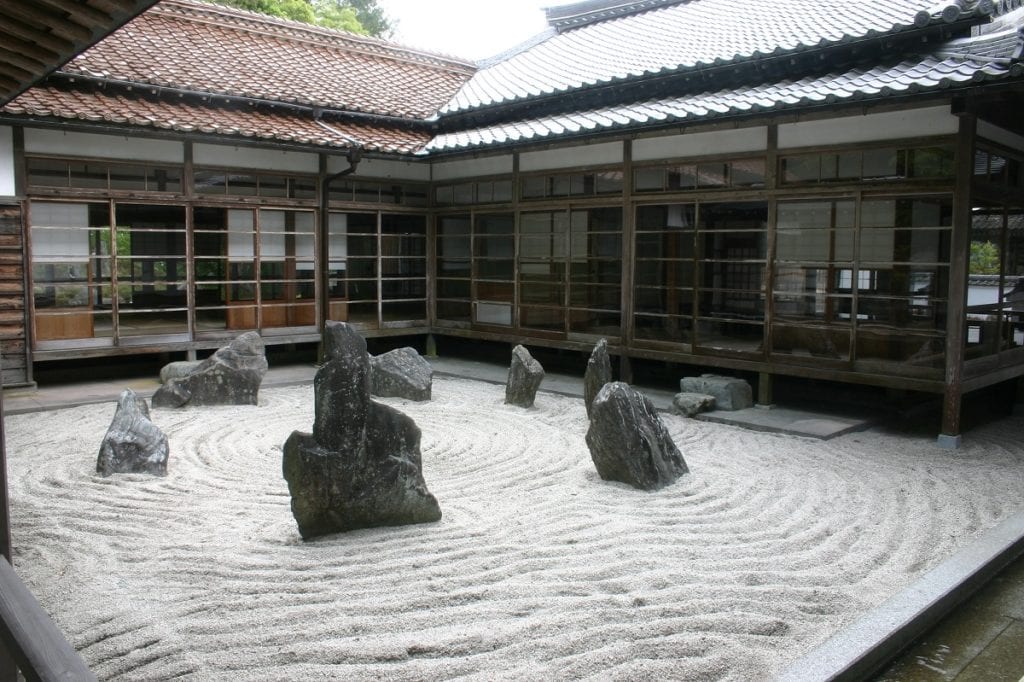
(Timothy Takemoto/Flickr)
Zen gardens are low maintenance and great to build in a difficult area of your yard. Since Zen gardens are mostly stone and gravel, they are perfect for that dry area in your backyard.
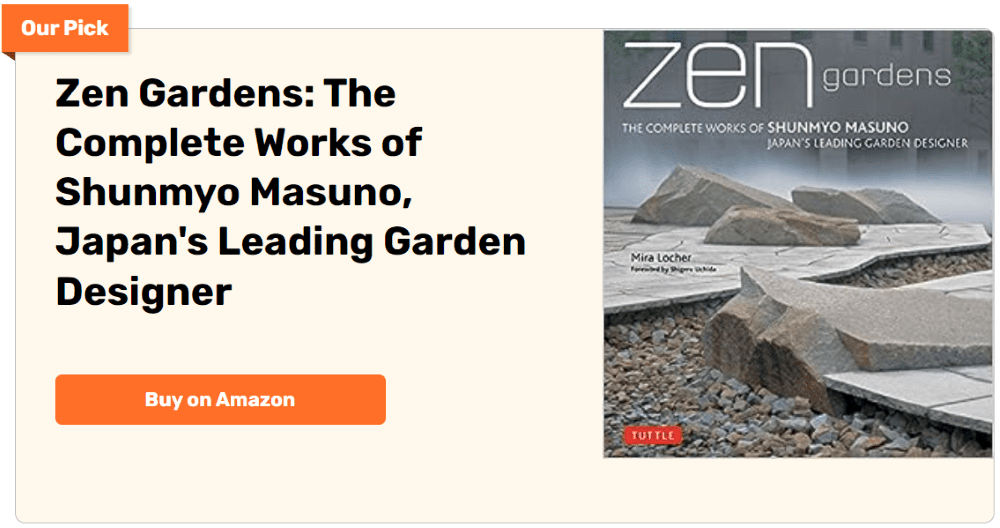
The Japanese Zen garden, also called the Japanese rock garden, is a calming space designed to represent a landscape. You can have this unique landscape at home by following our guide on how to make a zen garden below:
Guidelines on How to Make a Zen Garden
Contents
In the old days, Japanese landscapers built gardens using rocks and boulders to represe nt land and mountains. They used gravel raked into patterns to create the illusion of water.
These traditional gardens were large, open spaces, but these
days they can be any size.
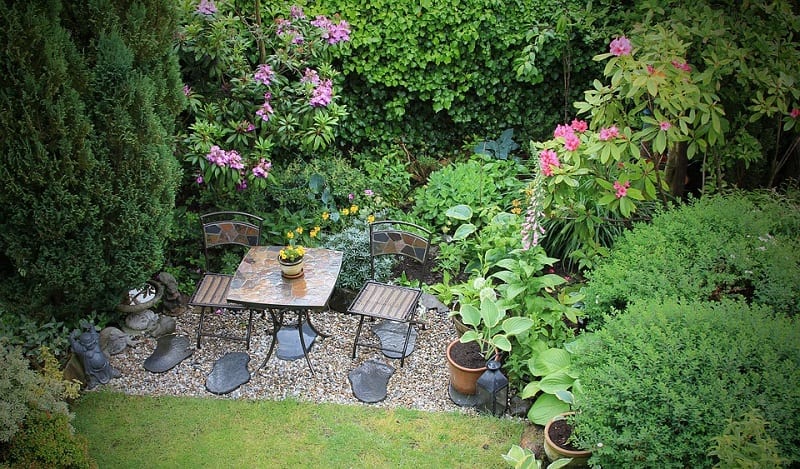
What You’ll Need
- Rocks or boulders
- Gravel or a water feature
- Bench, statue, or another focal element
- Plants
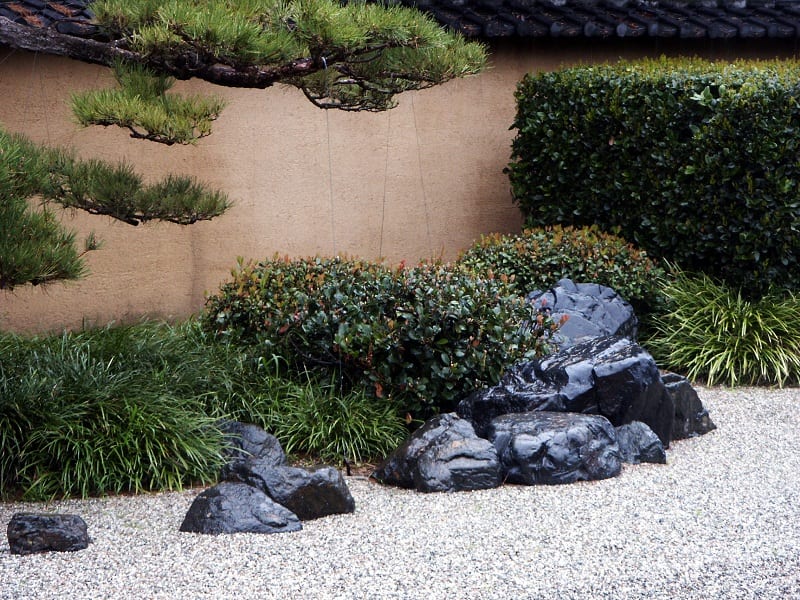
Designing Your Own
Once you’ve chosen an area for your garden, clear away any plants, grass, or weeds. Rake the soil. You want it flat and level. If necessary, add edging around the garden to keep grass and weeds at bay.
The next step is to decide where all of the largest features of the garden will go. Figure out the placement of all the elements of your garden.

(Photo: Radoslaw Kulupa/Pixabay)
Gravel or Water
If you’re using gravel to give the illusion of water, make sure you lay it in patterns that mimic the movement of water.
You can add an actual water feature instead of gravel, as well. You don’t need anything fancy. A simple garden fountain will suffice.
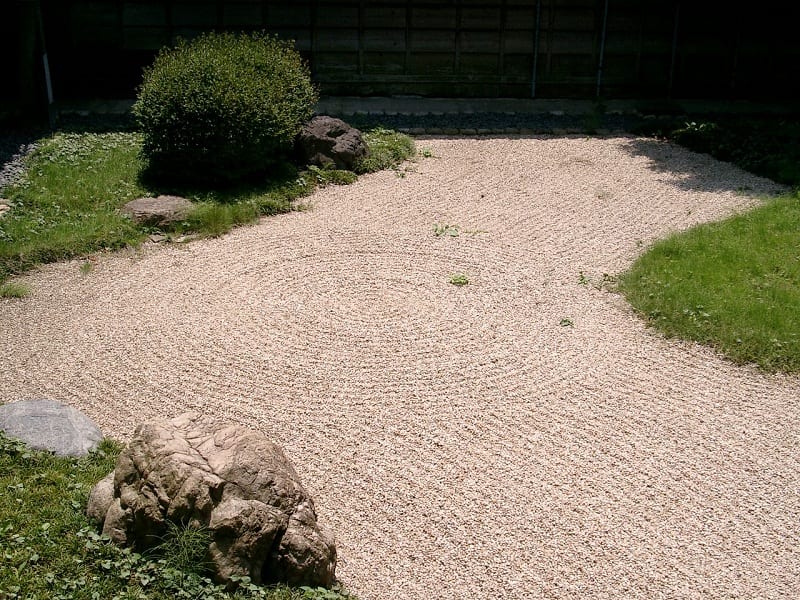
Plants for Your Garden
Plants are not a necessary feature. But if you’d like to add a few, you could either plant them right into the ground or just add a few, well-placed potted plants to the area.
Use low, spreading plants instead of upright ones. Bonsai
plants, cacti, and succulents would be excellent.
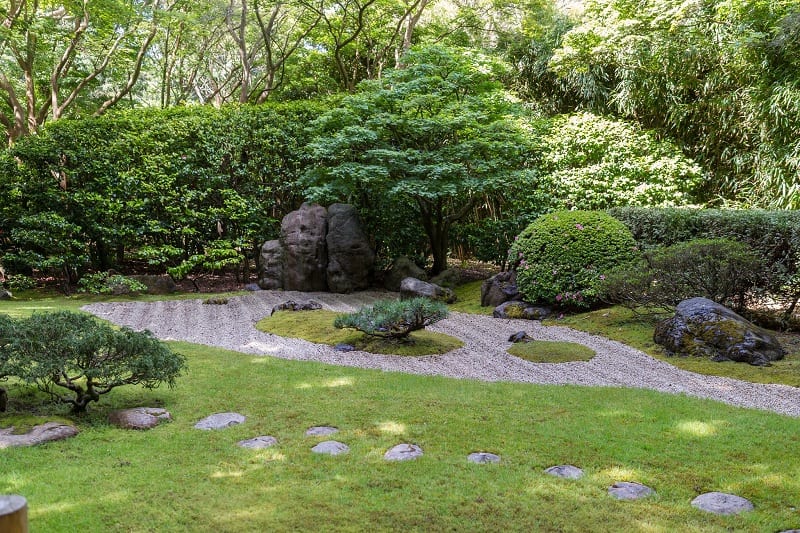
(Photo: Chris Favero/Flickr)
Naturalness, Simplicity, and Austerity
Creating your own Zen garden is a great way to reduce stress, improve your focus, and develop a sense of well-being. These beautifully stark spaces appeal to people who like carefully designed settings of raked sand or rocks and precisely clipped shrubs.
In designing your Zen garden, you should remember that they emphasize the principles of naturalness (Shizen), simplicity (Kanso), and austerity (Koko). Your garden should reflect these basic ideas.
Are you planning to build your own Zen garden? The gallery below should give you a spark of inspiration.
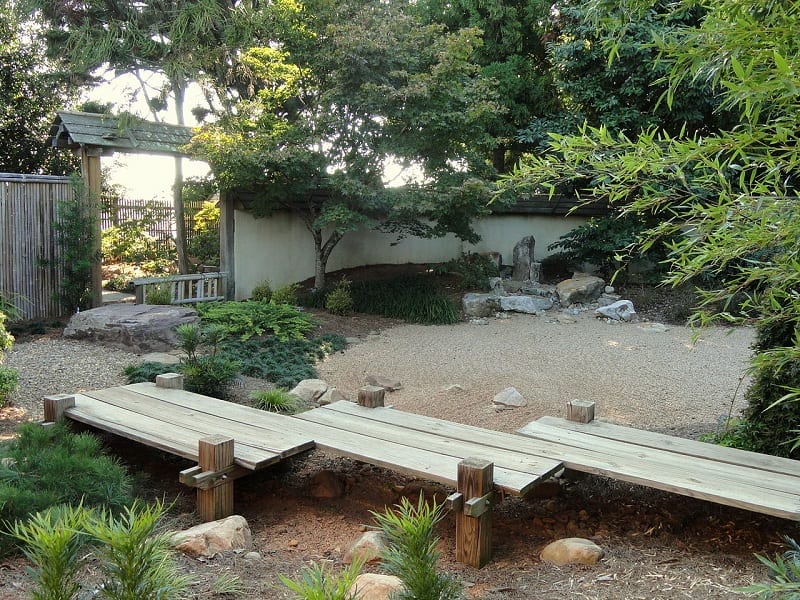
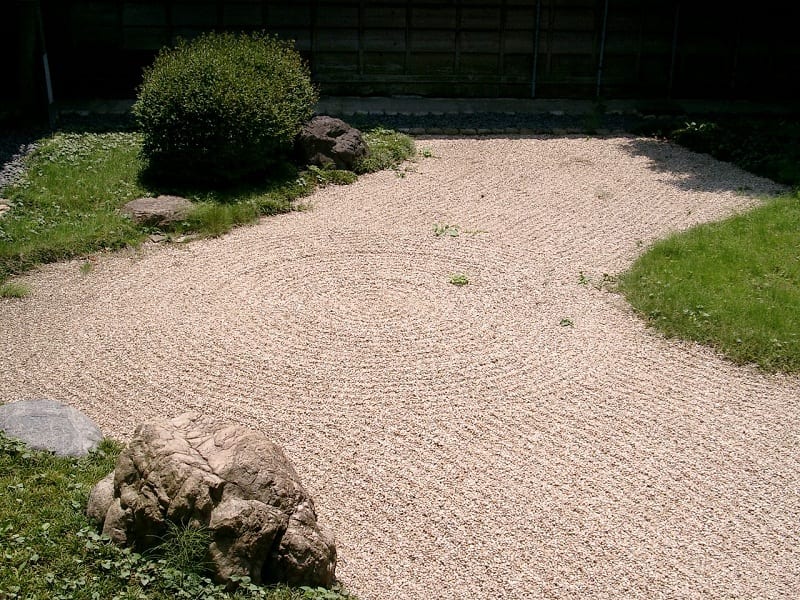
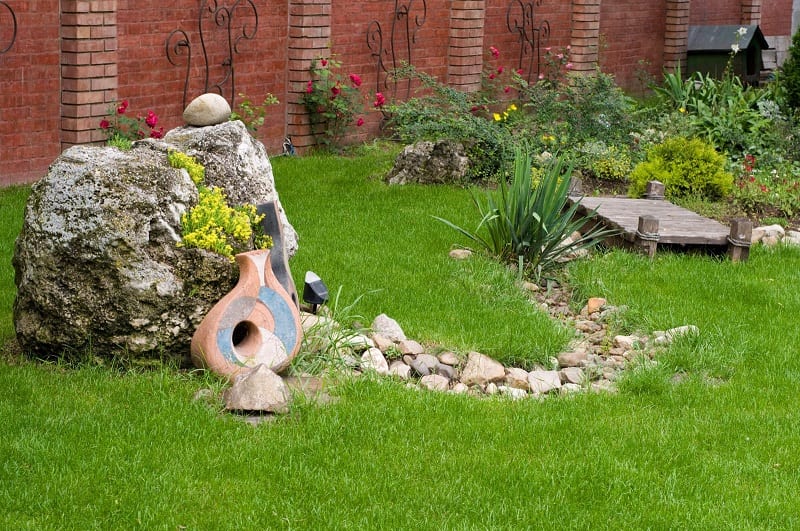
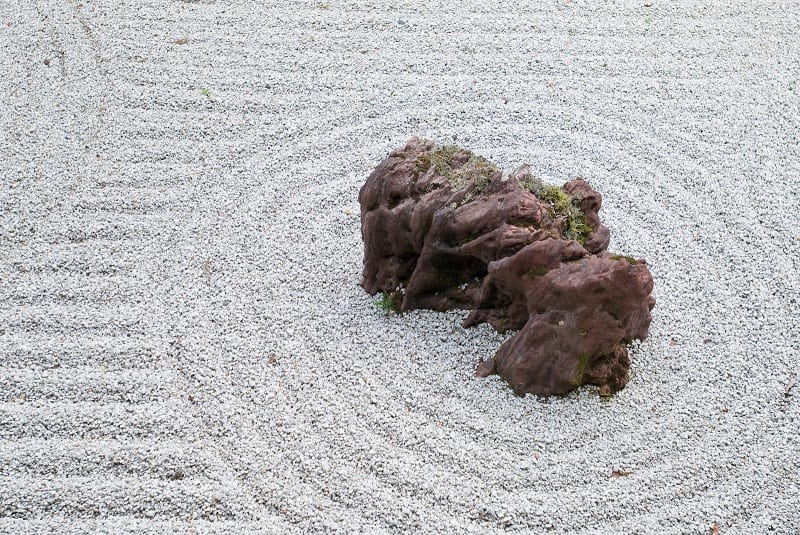
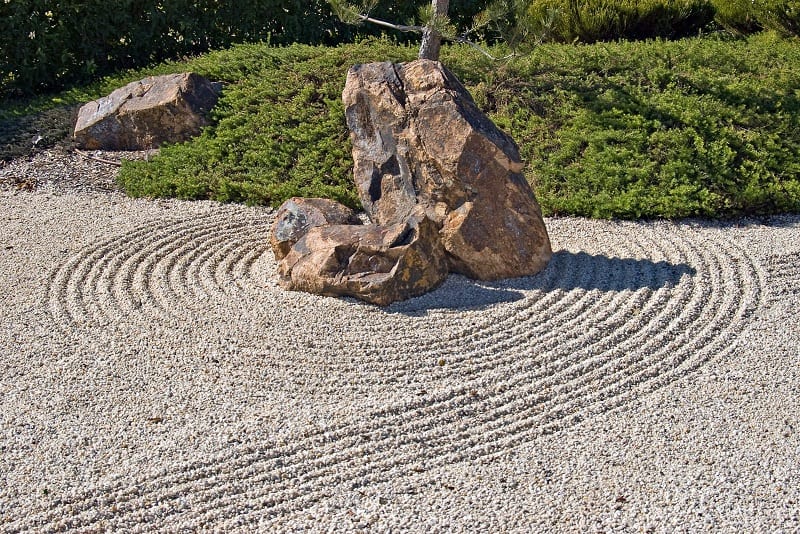
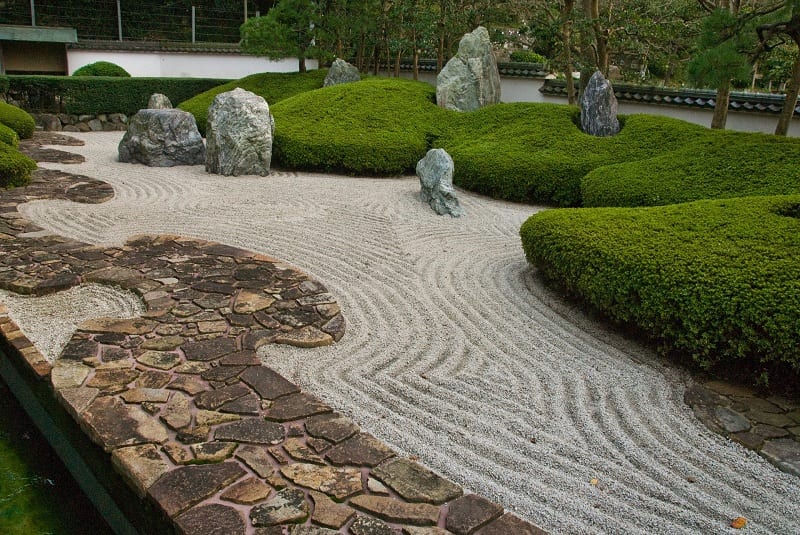
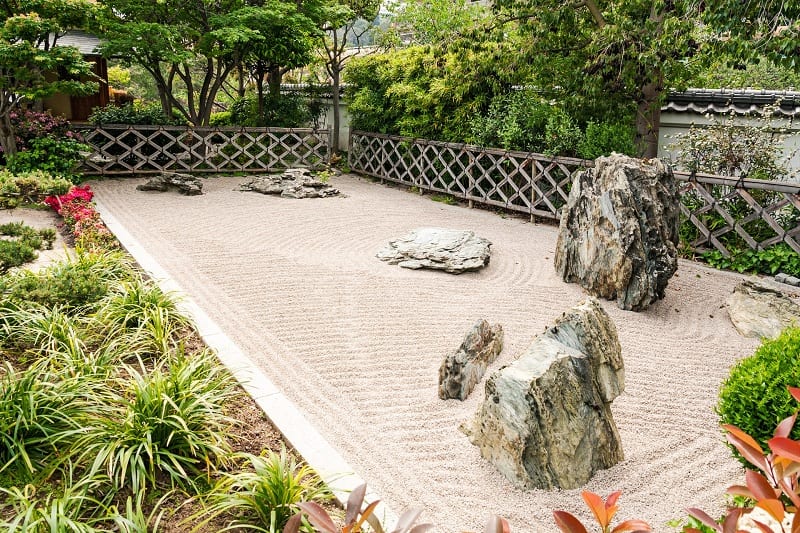
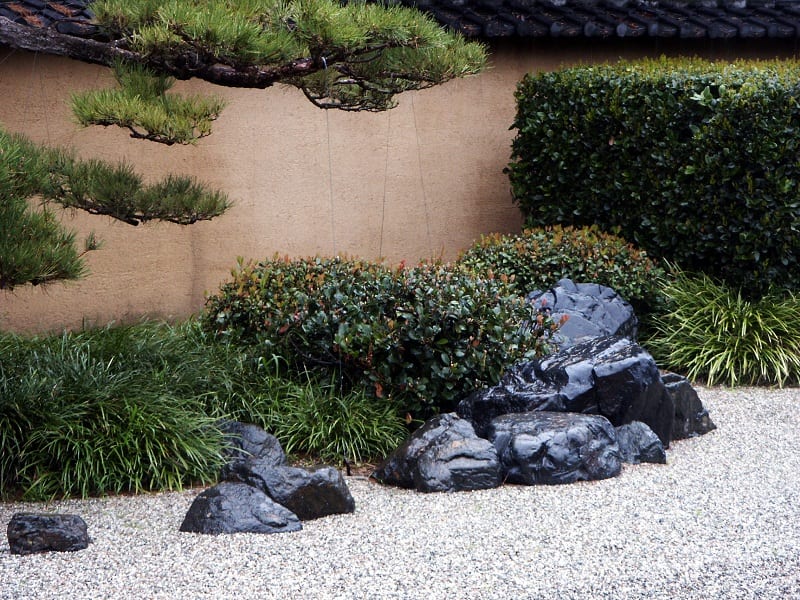
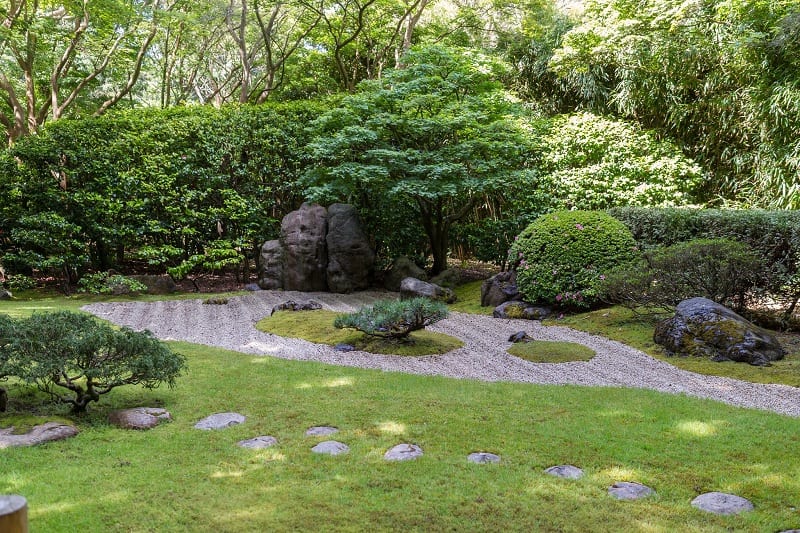
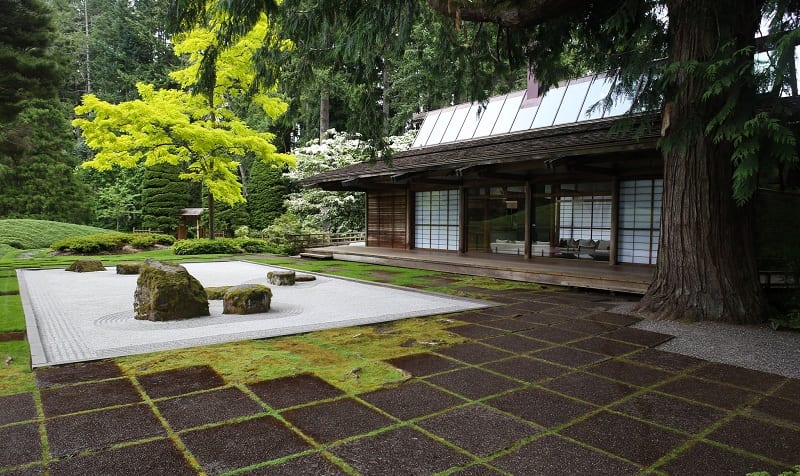
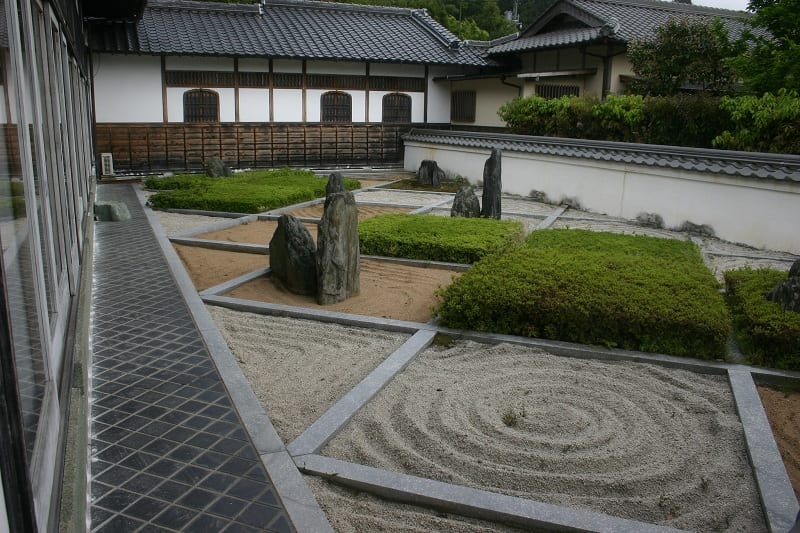
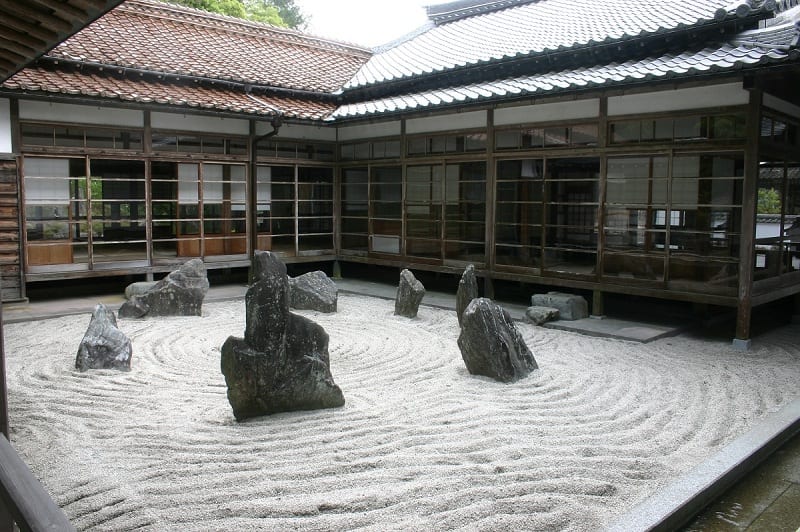
How to Consider Scale, Color, and Texture in Zen Garden Design
Creating a Zen garden requires careful consideration of scale, color, and texture to achieve harmony and balance. These elements must work together cohesively to reflect Zen philosophy’s meditative and serene essence, creating a tranquil space that inspires relaxation and mindfulness.
Scale
Scale is about achieving proportionate harmony among all elements in the garden. In small Zen gardens, oversized boulders can feel overwhelming, while tiny stones may get lost in a larger space. Consider the garden’s dimensions and select elements that fit naturally within the space. For instance, medium-sized rocks or gravel paths can provide balance without overcrowding in a compact area.
Use a mix of boulders, gravel, and strategically placed plants in larger spaces to maintain visual interest. When arranging these elements, plan meticulously. Once heavy stones are in place, moving them can be difficult, so visualize their layout beforehand. A rake or garden tool can help simulate patterns or pathways before committing to a final design.
Color
The color palette of a Zen garden is integral to creating a calm and soothing atmosphere. Neutral tones work best to evoke tranquility and keep the focus on simplicity. Darker stones paired with lighter gravel create soft contrasts that enhance the garden’s visual depth without overwhelming the senses. Avoid incorporating brightly colored stones or flashy ornaments, as they can clash with the minimalist aesthetic.
Instead, lean toward subtle hues like muted grays, tans, and greens that naturally complement the surroundings. These colors not only enhance the garden’s serenity but also help blend the space seamlessly with its environment, reinforcing the feeling of harmony.
Texture
Texture brings variety and richness to a Zen garden without disrupting its simplicity. Incorporating different textures adds depth while maintaining a unified, calming appearance. Plants like mosses, ferns, and evergreen shrubs provide a soft, organic contrast to the harder textures of rocks and gravel. Moss, in particular, is a popular choice for Zen gardens, as it adds a lush, velvety appearance that complements the stone and sand elements.
Raked gravel can also contribute texture by creating patterns that mimic water ripples, enhancing the space’s meditative quality. Remember to balance these textures thoughtfully, too much variation can distract from the garden’s intended peacefulness.
You can design a Zen garden that exudes tranquility by combining proportionate scale, a calming color palette, and a harmonious blend of textures. The careful arrangement of these elements will reflect the core principles of Zen, simplicity, balance, and mindfulness, transforming your garden into a serene retreat.
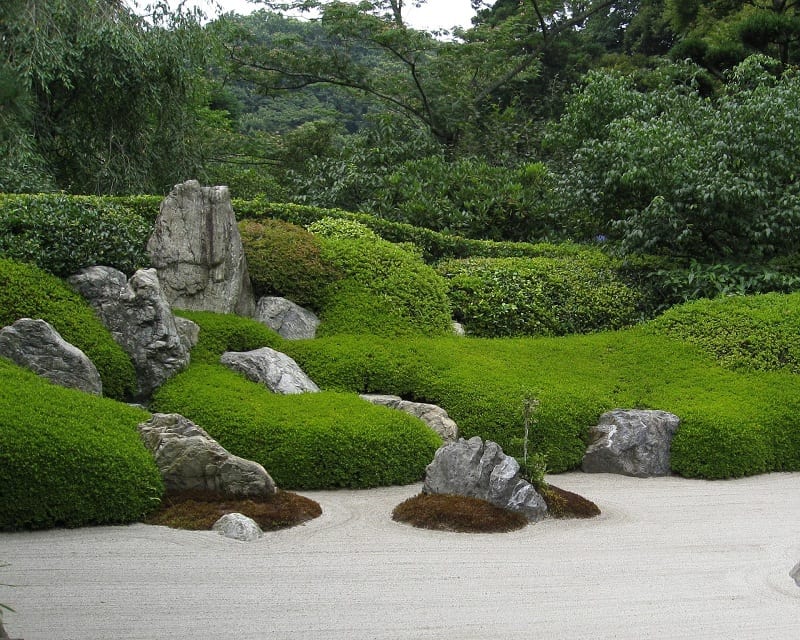
Why is Asymmetry Important in Zen Garden Design?
Asymmetry plays a crucial role in Zen garden design for several reasons. At the heart of Zen philosophy is the idea of imperfection being a natural and beautiful part of life. This concept, known as “wabi-sabi,” celebrates the beauty found in impermanence and imperfection, making asymmetrical designs a perfect reflection of this principle. By intentionally avoiding symmetry, Zen gardens create a sense of authenticity, harmony, and mindfulness that aligns with their meditative purpose.
Creating a Natural Balance
Imitating Nature: Nature is inherently asymmetrical. Trees grow at different angles, rocks are scattered in irregular patterns, and streams carve unpredictable paths. Zen gardens replicate these organic forms to establish a connection to the natural world. This approach fosters a sense of calm, as the irregularities feel familiar and grounding.
Harmony through Imbalance: Asymmetry unconventionally creates balance. By breaking free from rigid patterns, it encourages viewers to engage with the garden’s layout on a deeper level. For example, a single large boulder paired with smaller stones or plants might create a visual weight that balances the space without exact symmetry. This thoughtful imbalance evokes a sense of peace, as it mirrors the way harmony arises naturally in the world.
Encouraging Mindfulness
Dynamic Interest: An asymmetrical layout draws the observer’s attention to individual elements in the garden. The placement of rocks, the curve of a pathway, or the subtle contrast between plants invites the visitor to pause and reflect. This deliberate arrangement slows the mind, encouraging mindfulness and presence—core principles of Zen philosophy.
Symbolism and Intuition: Asymmetry offers a personalized experience for each observer. Without a clear focal point, the viewer is free to interpret the arrangement intuitively. A jagged stone or a winding path might symbolize life’s unpredictability for one person, while another might see it as a metaphor for growth. This flexibility reflects Zen teachings, which value personal insight and intuition over fixed interpretations.
Asymmetry in Zen gardens is far more than a design choice. It’s a philosophical practice that embodies the essence of Zen itself. By embracing imperfection, it reminds us that beauty lies in the unpredictable and the imperfect. It reflects the transient nature of life and encourages us to find harmony within imbalance. Each element, placed with intention, invites reflection and fosters a deep sense of calm and connection. Through asymmetry, Zen gardens become a living representation of mindfulness, natural beauty, and inner peace.
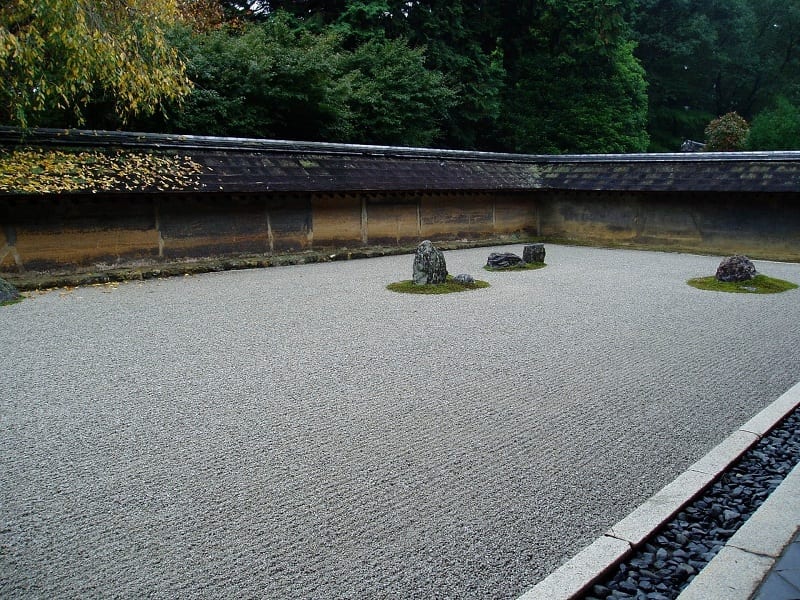
What Are the 7 Guiding Principles of Zen Garden Design?
Zen garden design is an art form that marries simplicity with profound meaning. By applying the seven fundamental principles of Zen design, one can craft a space that resonates with tranquility and contemplation. Here’s a closer look at each guiding principle on to know how to make a zen garden authentic.
- Simplicity (Kanso)
Embrace the beauty of simplicity by removing the non-essential. This principle encourages a clutter-free environment, where each element adds value through its presence, devoid of unnecessary detail. - Austerity (Shibui)
Austerity isn’t about being stark but about subtle refinement. It focuses on minimalistic beauty achieved with restrained use of decor, highlighting understated elegance. - Asymmetry (Fukinsei)
Unlike traditional symmetry, Zen gardens thrive on the beauty found in imbalance. Asymmetry creates visual interest and reflects the unpredictable nature of life and the universe. - Naturalness (Shinzen)
Nature should guide the design. Naturalness emphasizes the use of organic elements that blend seamlessly with the surroundings, promoting harmony with nature. - Mystery or Subtlety (Yugen)
Invoke mystery with elements that suggest rather than reveal. A Zen garden should entice with subtle features that engage the imagination and evoke deeper contemplation. - Magical or Unconventional (Datsuzoku)
Break free from conventional norms to introduce an element of surprise or enchantment. This creative approach invites a sense of wonder and original thought. - Stillness (Seijaku)
The ultimate goal is achieving a sense of calm. Stillness is about creating a space that offers quietude and peace, encouraging introspection and meditation.
By incorporating these principles, a Zen garden becomes not just a physical space, but a spiritual haven inviting reflection and tranquility.
Conclusion
Creating a Zen garden requires thoughtful planning, attention to detail, and an understanding of its core principles of simplicity and balance. By carefully selecting and arranging elements like rocks, plants, and gravel, you can design a tranquil space that fosters mindfulness and inner peace. With regular care and intention, your Zen garden will become a serene retreat that reflects harmony and inspires reflection.
FAQ: How to Make a Zen Garden
What is the importance of maintaining a Zen garden?
Caring for a Zen garden goes beyond mere aesthetics; it’s a crucial component of the meditative journey. Raking the gravel not only keeps the artistic patterns intact but also engages in a calming, repetitive action that aids focus and mindfulness.
How do plants contribute symbolically to a Zen garden?
In a Zen garden, plants are chosen for their symbolic significance to enhance spiritual and aesthetic balance. Pine trees symbolize longevity and resilience, while maples represent the tranquility of seasonal transitions, from vibrant spring to contemplative autumn. These elements collectively deepen the garden’s meditative experience, fostering introspection and serenity.
Why is love and care important in maintaining a Zen garden?
Love and care in maintaining a Zen garden go beyond physical upkeep, fostering tranquility within both the garden and the gardener. Acts like raking gravel or tending plants become mindfulness practices, promoting relaxation, reducing stress, and nurturing inner peace. This intentional care transforms the garden into a harmonious, artistic sanctuary that inspires serenity and a deep connection to nature.
How do Zen gardens differ from Western gardens?
Zen gardens and Western gardens offer distinct experiences by engaging the senses and emotions in unique ways. Western gardens captivate with their lively displays, featuring an array of bright colors and a variety of plants that create intricate textures and rich visual appeal. These gardens often incorporate decorative elements to enhance their vibrant atmosphere.
How do different times of day affect the appearance of a Zen garden?
A Zen garden transforms throughout the day, reflecting different moods with changing light. Morning sunlight softly illuminates the garden, highlighting its textures and patterns with a calming glow, while the afternoon sun enhances contrasts, emphasizing the garden’s dramatic artistry. At night, moonlight casts a serene, mystical quality, making the garden an ideal space for meditation and reflection.
For more gardening design. Check out our keyhole garden design guide!








